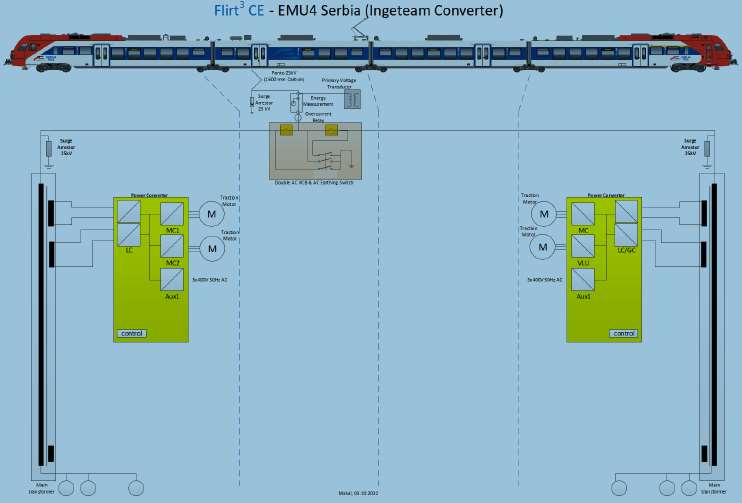Research on tire internal defect identification method based on deep learning
Abstract
As an important part of automobile, the safety and durability of tire have attracted more and more attention. Tire defect detection is an important link to ensure tire quality, while traditional detection methods have problems such as low efficiency, high false detection rate and high labor intensity. Therefore, this study aims to develop an efficient and accurate tire defect identification and classification technique to improve the efficiency and accuracy of tire inspection. In this paper, based on YOLO (You Only Look Once) v5 algorithm, tire defect recognition and classification are studied. Firstly, the data sets containing various types of tire defects were collected and sorted out, and the data sets were preprocessed. Then, by constructing, training and optimizing the YOLOv5 tire defect recognition model, the fast and accurate recognition of tire defects was realized. Finally, the performance of the model was evaluated through experiments and compared with the existing methods. The experimental results show that the tire defect recognition and classification method based on YOLOv5 proposed in this study has high accuracy. Compared with traditional methods, this method has a significant improvement in detection speed and accuracy.
References
[1]Qin Z, Song Y, Li M, et al. Research on Quality Problems and Countermeasures of Automobile Tire. Theory and Research. 2012; 48(9): 25-27.
[2]Cui M, Yang H, Xie S, et al. Design of Automobile Tire Wear Detection System Based on Machine Vision. Manufacturing Automation. 2020; 42(01): 10-14.
[3]Li M, Jiang J. Tire Defect Detection Algorithm Based on Deep Learning. Information Technology and Informatization. 2021; (2): 52-53.
[4]Wang Z, Ren A, Li S. Detection System of Tire Tread Wear Degree. Computer System Application. 2021; 30(06): 88-93.
[5]Yang H, Wang Q, Xue M. Selection and Use Effect Analysis of Construction Machinery Tires. Rubber & Plastic Technology & Equipment. 2018; 44(11): 19-23.
[6]Huang Z, Zhang Y. A Survey of Object Detection Based on Deep Learning. Science and Technology Information. 2023; 21(24): 13-16.
[7]Zeng Z. Application Progress of Deep Learning in the field of Computer Vision. Computer Products and Circulation. 2020; (01): 230.
[8]Duan X, Zhou Y, Tian D. et al. Applications of Deep Learning in the field of autonomous driving. Unmanned System Technology. 2021; 4(06): 1-27.
[9]Zhang Y, Dong Z, Meng X. Research on Personalized Advertisement recommendation System and its application. Journal of Computer Science. 2021; 44(03): 531-563.
[10]Liu J, Jiang X, Ding Y, et al. Application of Face recognition Technology Based on Deep Learning in Computer Room Monitoring. Information Technology and Informatization. 2023; (11): 213-216.
[11]Wu S, Xu Y, Zhao D. A Survey of Object Detection Based on Deep Convolutional Networks. Pattern Recognition and Artificial Intelligence. 2018; 31(04): 335-346.
[12]Krizhevsky A, Sutskever I, Hinton GE. ImageNet classification with deep convolutional neural networks. Communications of the ACM. 2017; 60(6): 84-90. doi: 10.1145/3065386
[13]Abhronil S, Yuting Y, Robert W et al. Going Deeper in Spiking Neural Networks: VGG and Residual Architectures. Frontiers in neuroscience. 2019: 1395.
[14]He K, Zhang X, Ren S, et al. Deep Residual Learning for Image Recognition. In: Proceedings of the 2016 IEEE Conference on Computer Vision and Pattern Recognition (CVPR). doi: 10.1109/cvpr.2016.90
[15]Zhou F, Jin L, Dong J. A Survey on Convolutional Neural Networks. Journal of Computer Science. 2017; 40(06): 1229-1251.
[16]Li B, Liu K, Gu Z, et al. A Survey on Convolutional Neural Networks. Computer Times. 2021; (04): 8-12, 17.
[17]Liu Y, Wang Y, Wang Y, et al. Image recognition based on deep learning convolutional neural network. Information and Communication. 2019; (07): 7-8.
[18]Zheng X. Tire Band Layer Defect Detection Based on X-ray Imaging and Texture Analysis. Jinan University; 2019.
[19]Wang CY, Mark Liao HY, Wu YH, et al. CSPNet: A New Backbone that can Enhance Learning Capability of CNN. In: Proceedings of the 2020 IEEE/CVF Conference on Computer Vision and Pattern Recognition Workshops (CVPRW). doi: 10.1109/cvprw50498.2020.00203
[20]Zhang Y, Guo W, Cai Z, et al. Remote sensing image object detection based on joint multi-scale and attention mechanism. Journal of Zhejiang University: Engineering Science Edition. 2022; 56(11): 2215–223.
[21]Zheng Z, Wang P, Liu W, et al. Distance-IoU Loss: Faster and Better Learning for Bounding Box Regression. In: Proceedings of the AAAI Conference on Artificial Intelligence. doi: 10.1609/aaai.v34i07.6999
[22]Ai X. Research on Automatic Defect Detection Algorithm Based on Tire X-ray Image. Harbin Engineering University; 2019.
[23]Chen M. Research on Tire Defect detection Algorithm Based on X-ray Image. Shanghai Jiaotong University; 2020.
Copyright (c) 2024 Jiaqi Chen, Aijuan Li, Te Wang, Xibo Wang

This work is licensed under a Creative Commons Attribution 4.0 International License.





.png)


